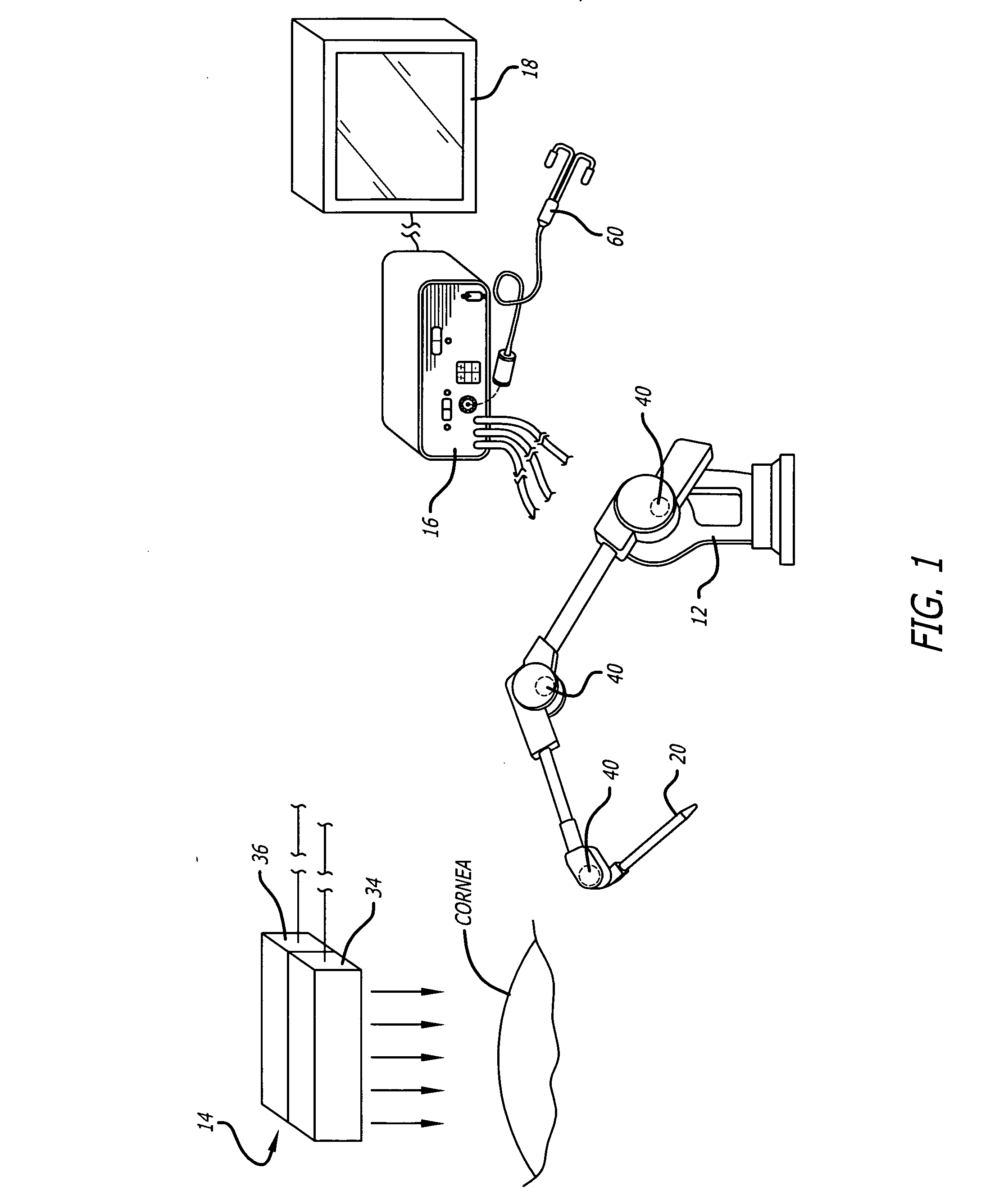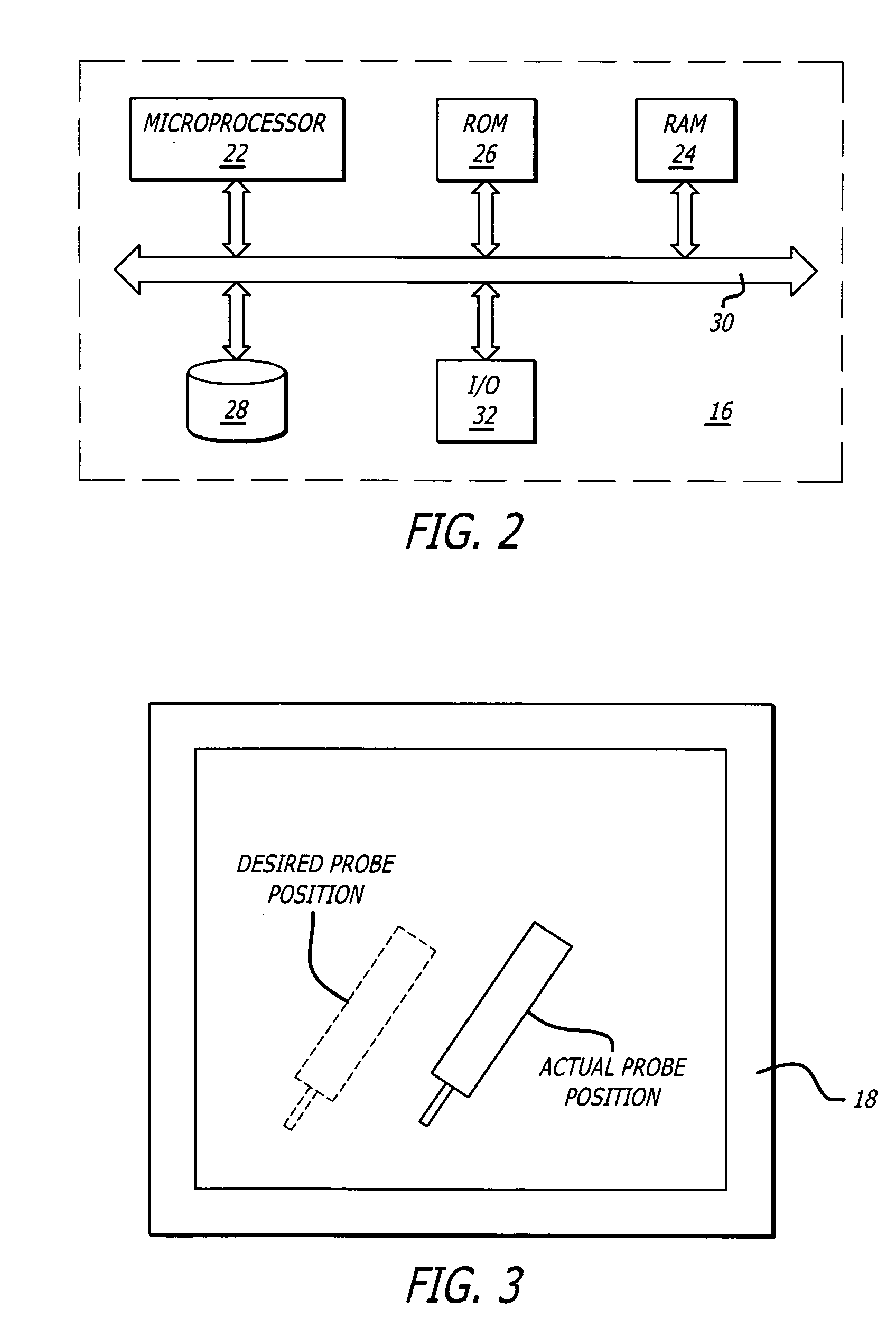Method and apparatus to align a probe with a cornea
a probe and cornea technology, applied in the field of ocular tissue treatment, can solve the problems of glaring effect in the visual field, permanent damage to the eye, and risk of puncturing the descemets membrane and the endothelium layer,
- Summary
- Abstract
- Description
- Claims
- Application Information
AI Technical Summary
Problems solved by technology
Method used
Image
Examples
Embodiment Construction
[0023] Disclosed is a system and method for denaturing corneal tissue of a cornea. The system-may include an optical recognition system that can recognize a feature of the corneal. The recognized feature is used to register a desired probe location relative to the cornea. The desired probe location is displayed by a monitor. The system further includes a probe that is coupled to an arm. The arm contains position sensors that provide position information of the probe. The position information is used to map and display the actual position of the probe. By watching the monitor the user can move the probe into the desired probe location relative to the cornea. Once the probe is properly positioned energy is delivered to denature corneal tissue.
[0024] Referring to the drawings more particularly by reference numbers, FIG. 1 shows an embodiment of a system 10 that can be used to denature corneal tissue. The system 10 includes an arm 12 and an optical detector 14 that are connected to a c...
PUM
 Login to View More
Login to View More Abstract
Description
Claims
Application Information
 Login to View More
Login to View More - R&D
- Intellectual Property
- Life Sciences
- Materials
- Tech Scout
- Unparalleled Data Quality
- Higher Quality Content
- 60% Fewer Hallucinations
Browse by: Latest US Patents, China's latest patents, Technical Efficacy Thesaurus, Application Domain, Technology Topic, Popular Technical Reports.
© 2025 PatSnap. All rights reserved.Legal|Privacy policy|Modern Slavery Act Transparency Statement|Sitemap|About US| Contact US: help@patsnap.com



